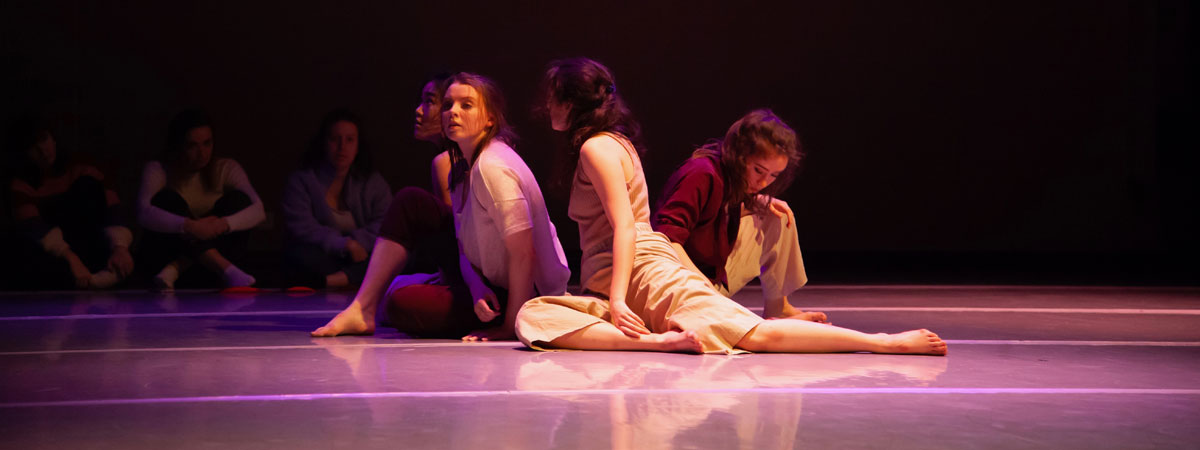On Wednesday 18th March 2020, I watched four of my BA Hons dance and choreography students perform. They were touching each other’s faces, caressing, sharing sweat and moving in close proximity as a living breathing organism, they were moving fast, eating up space with strength and grace, and supporting each other’s weight as they melted into the floor. We, the sparse audience, sat around them in a circle, many of us weeping.
This sharing should not really have happened knowing what we know now. However, part of the trauma of this moment in time was how quickly the change to our lives and artistic practice has had to be implemented, without the moment when you mark such a major transition. For my 3rd year students at Falmouth University, and many others studying the performing arts across the UK, this has meant letting go of their rite of passage, the moment they make the performance work that somehow defines their time with us. With the beginning of social distancing, nothing could have been more poignant than watching these moving bodies being so... well, together.
Movement is change, as they say, and yet the change that the coronavirus has bought to our dancing lives is a profoundly challenging one because the art form and social practice of dance requires, by necessity, being in a room with others. There have been many amazing, inspiring and original responses in the last days and weeks from my dancing community. People dancing in the street so others can watch from their doorways, digital dance challenges, movement research sent to one another via a screen, shared choreographic zoom scores and audio improvisation classes. However valiant and engaging these efforts though, what is valuable about dance can only be re-enforced through its lack – the ‘liveness’ – the intangible energy and exchange that occurs between moving bodies in space.
In a crisis like this pandemic, priority is given to what is essential: food, shelter and safety, of course. But in its wake an age-old debate rears its head about the value and place of the arts in society. Myself and many other dance scholars and artists have long been arguing for the necessity of dance in people’s lives and communities; to encourage relationships across generations, to promote well-being, and to communicate alternative realities - because in dancing together we connect and we negotiate our shared experiences, we make contact in more ways than one. For those of us working in the performance sector the future precarity of livelihoods fought so hard for (no-one who studies dance is in it for the money!) is hard to predict or think about, but harder still – for the students I counsel through their grief via a screen (and that they feel somewhat guilty for having in the first place) - is the lack of visceral connection that has become so much part of our being that without it our very identity is called into question.
----
So perhaps in social distancing we can still ‘reach towards’ others as Erin Manning put it in her 1994 book ‘The Politics of Touch’ and therefore highlight what exists between bodies and in the relational spaces we create if we stay open - with or without the touch we have come to rely on.
As lockdown in the UK eases a little and we consider what ‘being-together’ might mean in a post pandemic world, learning to live with the uncertainty this brings; perhaps take a moment to consider what this time has meant for your practice - as well as the many challenges - has it provided some pleasant surprises or new skills or activities you might like to continue?
I would also like to invite you, in a bid to articulate the value of our shared practice of dancing, how you might write a love letter to a lost dance… a dance that would have been in the Spring/Summer of 2020.
(If you would like to share these love letters or discuss this further, I would love to hear from you as part of my ongoing research process – email: ruthpethy@gmail.com)
 All photos: Dancers Yi Kwek, Stella Mcauly, Maria Evans and Kiera Sanderson. Photographer: Sophie Jane Hughes.
All photos: Dancers Yi Kwek, Stella Mcauly, Maria Evans and Kiera Sanderson. Photographer: Sophie Jane Hughes.